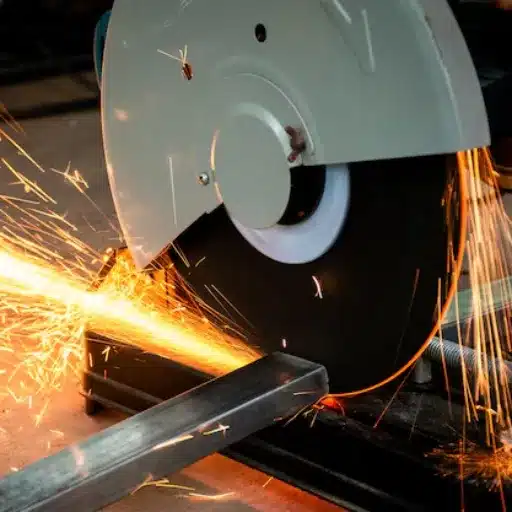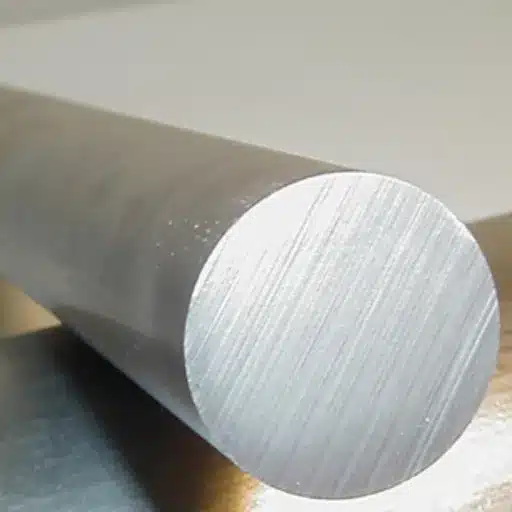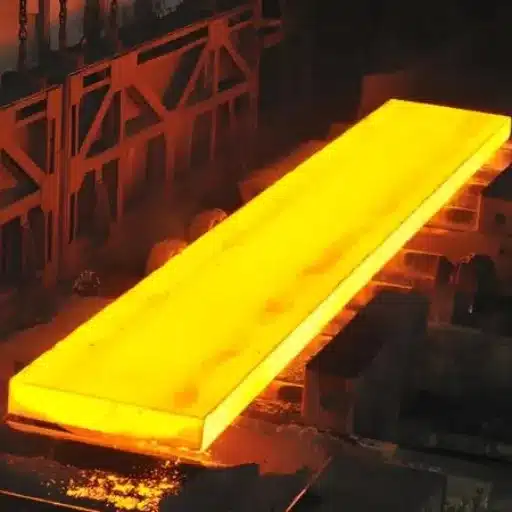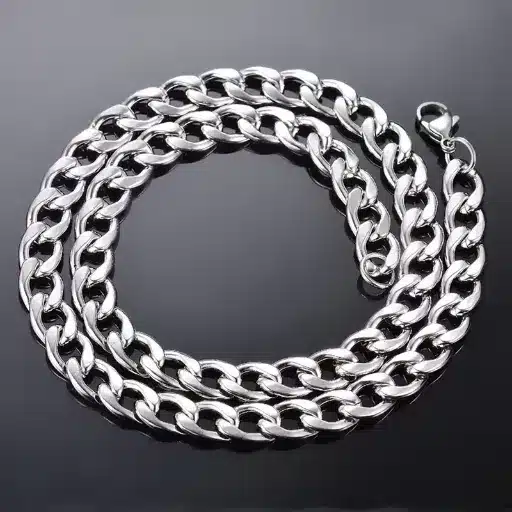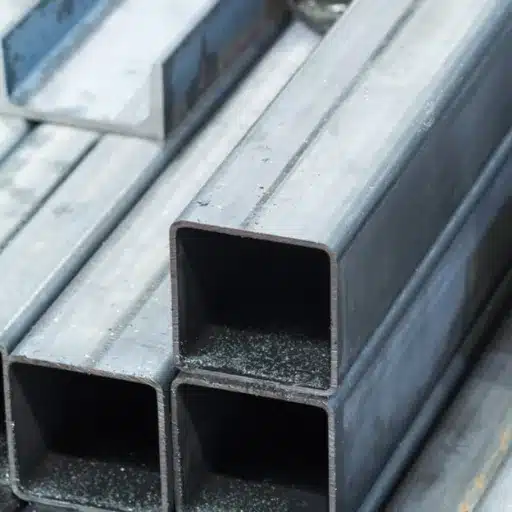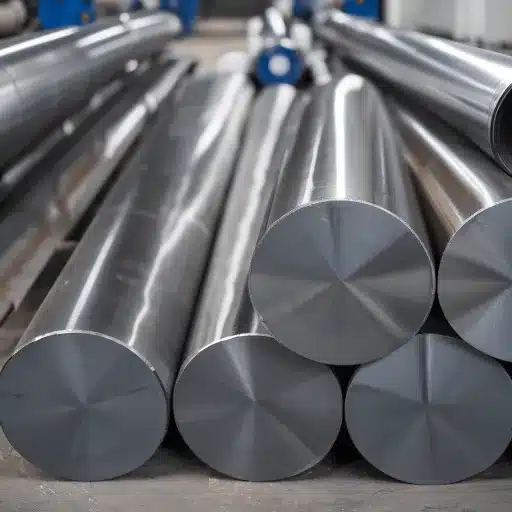When selecting materials in sectors such as the automotive or construction industries, strength, durability, and performance are among the most crucial factors to consider. These are some of the reasons why high-strength low-alloy steels or HSLA HX460LAD sheets have emerged in these industries. They have high tensile strength yet exhibit good formability, which makes them suitable for constructions prevalent in today’s cities. So, how does HSLA HX460LAD differ from the rest? The article provides insight into its characteristics, merits, and the causes of its extensive use in numerous applications. Whether you are a manufacturer, engineer, or simply enjoy learning about new materials, this article provides the necessary knowledge on how HSLA HX460LAD sheets enhance creativity and productivity.
Introduction to HSLA HX460LAD Sheets
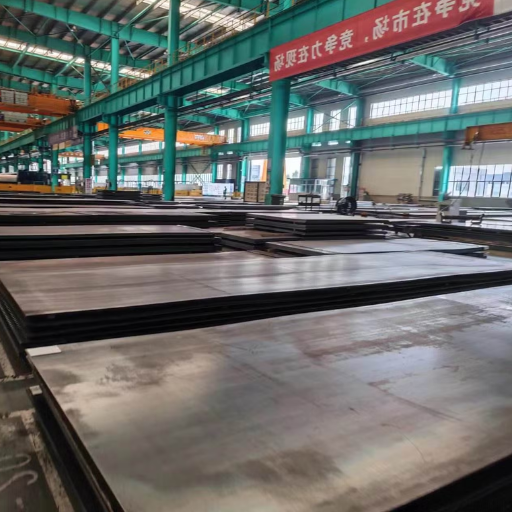
HSLA HX460LAD Sheets are highly durable and engineered to withstand harsh environments. These materials are specifically designed to provide high levels of strength while being lightweight enough to reduce weight during use, thereby making their application in the automotive, structural, and industrial sectors possible. Furthermore, it also offers strong resistance against damage and enables seamless welding and shaping during production, thereby allowing for effective production processes without compromising reliability. Their capacity to resist harsh environments makes HSLA HX460LAD sheets better suited for cutting-edge, performance-oriented design solutions.
What are HSLA Sheets?
HSLA HX460LAD sheets are premium steel solutions, which are specifically high-strength low-alloy steel, having improved metal characteristics which are necessary for different works such as in the automobile, building, and heavy industries.
Importance of High-Strength Low-Alloy Steel
| Key Point | Details |
|---|---|
| High Strength-to-Weight Ratio | 50% stronger than carbon steel, reduces weight by 20-30%. |
| Corrosion Resistance | Enhanced by elements like copper, chromium, and nickel. |
| Improved Weldability | Low carbon content ensures easy fabrication and welding. |
| Ductility and Toughness | Withstands high impacts and extreme temperatures without cracking. |
| Cost Efficiency | Reduces material and transportation costs due to lighter weight. |
| Applications | Used in vehicles, bridges, pipelines, and marine structures. |
| Microstructure Refinement | Fine-grain ferrite improves strength and toughness. |
| Environmental Durability | Weathering steels form protective patinas, reducing maintenance needs. |
| Versatile Grades | Includes weathering, microalloyed, and dual-phase steels for varied uses. |
| Energy Efficiency | Lightweight properties improve fuel efficiency in automotive applications. |
Overview of EN 10346 Standards
The European Standard EN 10346 covers continuous hot-dip galvanized flat products in the form of steel sheets. There are different types of rolled steel, such as high-strength low-alloy (HSLA) thin strips and sheets, that are highly valued in multiple industries due to their exceptional mechanical properties and smooth surfaces. The purpose behind the specification is to maintain consistency between all the products in terms of their material characteristics, coating properties and thickness.
These coatings, including zinc (Z), aluminium-zinc (AZ) and aluminium-silicon (AS) can be used to improve the durability of the steel. One of the advantages of zinc coatings, for example, is that they inhibit rusting and can therefore increase the durability of steel products considerably. Coatings of different thicknesses and weights per unit are required for various purposes. For example, zinc coatings weigh between 100 g/m² and 600 g/m², as specified in EN 10346.
EN 10346 also specifies mechanical properties, including yield strength, tensile strength, and elongation rates, for various grades, to facilitate forming, welding, or other manufacturing operations. For instance, HSLA HX460LAD sheets with a yield stress of at least 460 MPa are possible under this standard and are suitable for use in structures or automotive engineering. The standard also has provisions for allowable levels and other features, such as surface, weldability, and testing, as well as production guidelines.
Therefore, the production of high-quality hot-dip coated steel sheets falls under the EN 10346 standard. This standard is one of the most important ones because it is used in the production of steel products utilized in construction, transportation, and energy.
Mechanical Properties of HSLA HX460LAD Sheets
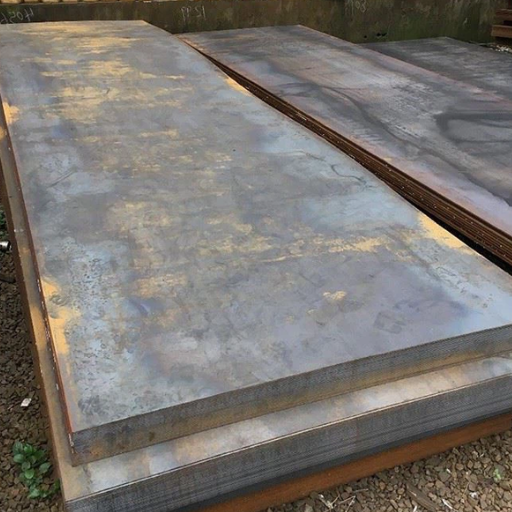
| Key Parameter | Details |
|---|---|
| Yield Strength (MPa) | 460–560 |
| Tensile Strength (MPa) | 500–640 |
| Elongation at Fracture | Minimum 15% |
| Thickness Range (mm) | 0.80–2.00 |
| Coating Options | Zinc (Z), Zinc-Iron (ZF), Zinc-Mg (ZM) |
| Testing Direction | Transverse |
| Standard | EN 10346 |
| Chemical Composition | C ≤ 0.15%, Mn ≤ 1.7%, Si ≤ 0.5% |
| Applications | Structural and chassis components |
| Key Features | High strength, good weldability |
Tensile Strength and Ductility
The mechanical performance of HSLA HX460LAD plates is remarkable due to the reasonable tensile strength which is at the same time ductile. This particular combination of mechanical parameters makes the material suitable for use in hard and temperable structures. The tensile and the ductility values are therefore as follows;
- Yield Strength: Not less than 460 MPa, addicted to high imperfection and deformation capabilities.
- Ultimate Tensile Strength (Ultimate Trials) UTS: Lies between 500–620 MPa, maintaining the material title, without brittling due to the possible tensile stress.
- Elongation at Break: At least 16%, indicating material stretching without breaking.
- Bendability: Alkaline-free HSLA HX460LAD sheets are good at severe bending processes, even when complicated geometry is to be formed.
- Toughness: Impression resistance to high-energy collisions, even at lower temperatures, for efficient exploitation.
HSLA HX460LAD sheets are thus beneficial in various industries where structural strength and efficient material utilization are required.
Impact Resistance
The HX460LAD sheets are one of the best examples of materials that exhibit impact, particularly when assessing their performance under out-of-plane load conditions. This means that a component can withstand high-speed, increasing levels of stress without cracking, thanks to the help of this material, and this applies to a wide range of applications. In fact, studies indicate that H-S-L-A grade H-X460LAD is stable with the steel engineering elements even at very low temperatures such as -40 Celsius.
Furthermore, Charpy V-notch tests showed a high percentage of energy values at 27 Joules and above for room temperature levels, and a high rate even at low temperatures. Despite this fact, the material can withstand a fracture better than many other materials whose fields are in focus, including those in the automotive, building, and heavy equipment industries, which are considered core industry sectors from the perspective of safety and development.
Fatigue Strength
Fatigue strength is a crucial attribute, particularly for elements that undergo repeated or cyclic loading over a prolonged period, varying in intensity, load condition, and extent across different sectors. It is the maximum stress that a material can survive for a given number of cycles without breaking the structural part in the operating area.
In the case of steel-based structures, various engineering steel alloys are used to manufacture structures and equipment with fatigue strengths ranging from 200 MPa to 1000 MPa. It is known that for any two materials, tempered martensitic steel will perform better against fatigue, with a lifespan in terms of cycles that can reach 10 million at stress levels of 250 to 500 MPa, resulting in no considerable damage.
It has also been shown that surface enhancement procedures, such as shot peening or case hardening methods, can significantly improve the fatigue strength of materials. Additionally, the development of processes such as VAR or powder compacting techniques helps ensure a more consistent distribution of elements within components. It internally equips the materials against fatigue by minimizing defects.
International standards for fatigue testing are often applied, such as ASTM E466, which is used to perform endurance testing of materials. These tests are typically carried out in controlled conditions within laboratories and usually provide an understanding of the material’s response to different cyclic stress conditions, which is useful for application purposes. This seems particularly helpful in the aerospace, automotive, and civil construction industries because such mechanical stresses are regularly encountered in working operations.
Chemical Composition of HSLA HX460LAD Steel
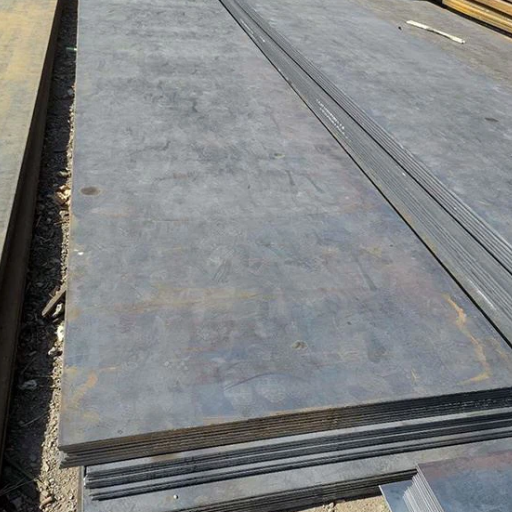
The chemical properties of HSLA HX460LAD steel are optimized for enhanced strength and improved performance. Thus, the content composition of the material generally contains several monitored elements with the following approximations, weight by weight:
- C<0.12%
- Mn<1.60%
- Si<0.50%
- P<0.025%
- S<0.015%
- Al>0.015%
There can also be added to the composition alloying elements such as titanium (Ti), niobium (Nb), or vanadium (V) in trace quantities which enhance the material’s toughness and strength.
Key Alloying Elements
The specific components of the alloys that make up steel have everything to do with the structure as well as the strength and the functionality. Some of these components and some of the aspects concerning the features of the steel are explained below:
- Carbon is the Alloy element that takes its central place in steel. However, it does cause significant changes in the force and hardness of steel, even when present in tiny doses. On the other hand, the presence of that much carbon leads to a considerable decrease in ductility. For low-carbon steels, the maximum carbon content is 0.12%, whereas for high-carbon steels, it can be as high as 2.0%.
- Manganese (Mn): Manganese enhances the tensile strength, wear resistance, and workability of steel. It is also a desulphurizer, or diodes eliminate the effect of sulphur in making the substance brittle. The amount of manganese used in steel ranges from 0.3% to 1.6%.
- Silicon (Si): This is also used as a deoxidizing agent in steels to help the steel to solidify properly during the molten state. It adds to the strength and hardness. The levels are commonly within the range of 0.1% and 0.5%.
- Phosphorus (P): According to metallurgical advice, phosphorus provides extra strength and allows easier machining. Their levels try to ensure the toughness and ductility do not suffer and are often controlled to be below 0.025%.
- Sulfur (S): Some types of steel benefit from sulfur, improving their machinability, while others consider it a contaminant. However, excessive amounts of sulfur can decrease hardness and toughness. Hence, it is controlled carefully and bath levels are kept to about 0.015% or less.
- Aluminum (Al): This metal, combined with aluminum, is used for refining the steel grains and its oxidation. Therefore, in conjunction with it, aluminum strengthens and toughens steel. Furthermore, aluminum is favorable in the nucleation of such grains as it facilitates the rapid cooling of steel. Aluminum is not usually added at less than 0.015% because it would be pointless to do so.
- Titanium (Ti): The addition of Titanium contributes to the strength of the product by refining the structure of grains and by promoting precipitation technologies since this metal forms relatively insoluble carbides and nitrides. That is to say, this element can influence the mechanical strength against corrosion and toughness considerably even in the range as low as 0.01%-0.1%.
- Niobium & Vanadium: The steel is expensive due to the use of microelements-Niobium, V., W., etc. These substances enable the steels to be strengthened through precipitation and grain refinement. Niobium falls around 0.02% to 0.05%, whereas the levels of vanadium are in the neighborhood of 0.015% to 0.25%.
- Chromium: Chromium or some of its compounds are present in specific steel components. It adds on the corrosion, hardens and increases the tensile strength of the alloy. The range may be 0.5% to 12% or even more, depending on the type of steel.
- Nickel (Ni): Nickel, on one hand, enhances specific mechanical properties of steel, such as toughness. Additionally, it is beneficial in low-temperature steel because it does not break as easily as standard steel. It can also range from 0.5 % to about 5.0% in concentration.
- Boron (B): A trace amount of Boron, ranging from 0.0005% to 0.003% is often added for hardenability purposes in most steels, so that strength is achieved without compromising ductility.
These elements are added to steel in carefully controlled concentrations, defined explicitly for each purpose. The adjustment of the alloy elements has contributed to the novel capabilities of steel used in various fields, ranging from highly efficient automobile production to massive civil engineering ad aeronautics.
Comparison with Other Low-Alloy Steels
| Parameter | HSLA HX460LAD | A36 Steel | A572-50 Steel |
|---|---|---|---|
| Yield Strength (MPa) | 460–560 | 250 | 345 |
| Tensile Strength (MPa) | 500–640 | 400–550 | 450 |
| Elongation (%) | 15 | 20 | 18 |
| Weight Reduction | 20–30% lighter than carbon steel | Standard weight | Moderate weight reduction |
| Corrosion Resistance | Enhanced with alloying elements | Low | Moderate |
| Weldability | Excellent | Good | Good |
| Applications | Automotive, structural, chassis | General construction | Bridges, buildings, equipment |
| Cost | Higher than A36 | Economical | Moderate |
| Formability | Good | Excellent | Good |
Coating and Surface Treatment for HSLA Sheets
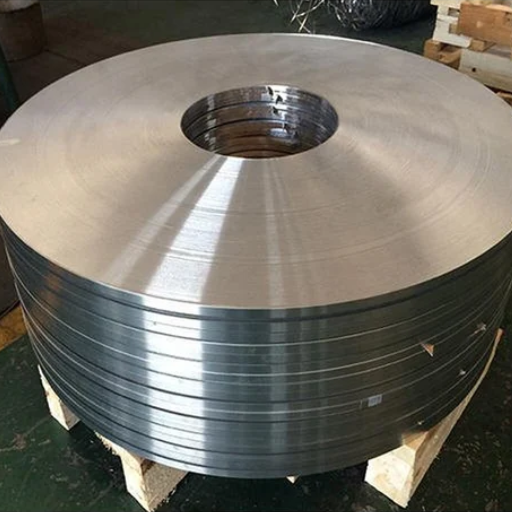
Various improvements in the high strength and resistance of HSLA HX460LAD sheets involve the application of coatings and surface treatments, among others. Among the ordinary ones are galvanizing, where zinc is deposited for corrosion protection, and organic ones, including paints and primers, which protect the environment. They increase resistance to rust, abrasion, and high temperatures, allowing for the use of products over a longer period and in a broader range of applications. Surfaces must be well-prepared, i.e., cleaned, degreased, etc., before any coating application to ensure adequate wetting and adhesion, as well as the hardening of the coatings.
Types of Coatings Used
- Galvanized Coatings
These are zinc coatings which are applied to iron or steel surfaces mainly using immersion in molten zinc, this process is called hot-dip galvanizing. This essentially protects the iron component from corrosion as this layer acts as a sacrificial one. In rural conditions, the average lifespan of steel products can increase by 50 years due to hot dip galvanization processes used; its effects have been found to last 20-25 years in industrial and marine environments. Moreover, to this effect, the zinc layer provides a barrier and also enhances durability by providing cathodic protection.
- Powder Coatings
Using powder coatings involves applying the coating on a target surface with the help of charged particles and curing them with heat to provide a hard finish. Many a time, powder coating is used due to its eco-friendly nature, which does not contain any harmful volatile organic content. Figures indicate that such coatings increase resistance to wear and tear by more than 30% compared to liquid paints used previously, making them effective in providing heavy-duty protection for vehicles and garden implements.
- Epoxy Coatings
Epoxy coatings are quite resilient and provide excellent adhesion characteristics, and do not corrode from chemicals, which is why these coatings are widely used in the industrial sector. The usage of these coatings is maintained for flooring applications in warehouse and manufacturing unit areas. Tests aimed to determine the depth of the coating protection turned out to be in some cases even higher than expected—more than 15 years in conditions of internal corrosion with a medium containing hydrogen sulfide gas when steel is coated correctly.
- Polyurethane Coatings
Polyurethane coatings are especially popular for outdoor coating due to their elasticity, UV resistance, and high gloss. The coatings have excellent UV and weather protective properties. Survey finds that throughout 5 to ten years of heavy exposure to sunlight, surfaces with polyurethane coatings do not show any signs of deterioration in their appearance or function.
- Ceramic Coatings
Ceramic coatings represent a new technology, and these coatings find applications in the automotive and aerospace industries, where high temperatures and extreme durability are required. These coatings can withstand temperatures as high as 1,800°F (980°C) and offer improved heat dissipation capabilities. By applying ceramic coating to various engine parts, thermodynamic wear is reduced by up to 50%, according to studies in materials science.
- Waterborne Coatings
The growing ecological awareness has led to a rise in waterborne coatings, which primarily use water as the solvent as opposed to the more commonly used chemicals. These coatings offer exceptionally thick protection against rust and help reduce VOCs to extremely low levels. Markets report a 5.5 percent compound annual growth rate (CAGR) over the next five years for the waterborne coatings industry segments, indicating that green construction projects are being increasingly adopted.
All of these types of coatings find specific uses in particular situations. With the advancements in coating technologies, the industries are getting a cost-effective method that not only produces less emissions but also extends the product life.
Surface Treatment Methods
Regarding surface treatment techniques, I will focus on those that offer both effectiveness and environmental friendliness in the process. Some of these methods include blasting, chemical shocking, and anodizing the surfaces to prepare them for the coatings that will be applied, ensuring proper adhesion to the surface. More specific projects may require plasma treatment or laser surface modification, which I would choose in such cases, as they are generally less harmful to the environment.
Effects on Corrosion Resistance
Several methods may be used to – alongside the prevalent cathodic coating method, to accomplish this surface preparation improvement to increase the resistance to corrosion: they are discussed below:
- Passivation of the Surface Mechanisms
Tough coatings, such as anodized ones, are based on increasing the surface hardness; the aluminum coating’s reactivity is reduced, enhancing its capability to passivate and improving oxidation or hydraulic sealing processes.
- Improved Coating Bonding
There are cases in which the adhesion of protective materials is enhanced through roughening techniques, such as shot blasting.
Such roughened surfaces will minimize incidences of coating peeling as it often occurs in most cases of corrosion.
- Decontamination of the Surface
A surface finish and cleansing process known as pickling may come in handy as a way of getting rid of all
The contaminants, oil films, and even corrosion products, which usually facilitate the increase and acceleration of corrosion.
- Modification of the Surface Characteristics
Plasma etching is one of the most redundant of technologies. It enriches the target object with specific chemical properties for different purposes. One of the most relevant applications is hydrophobization by plasma etching, where the object is no longer susceptible to moisture and acids, for example, with a specially treated metal surface.
- Surface Strengthening of a Specific Region
Various methods of laser surface hardening may enable or facilitate increasing the hardness of a metal’s surface in specific areas to confer high mechanical damage resistance, without exposing the base metal to corrosion.
All these quick assessment of factors helps one select the appropriate process depending on the requirements and hazards of the environment. For HSLA HX460LAD sheets in an outdoor condition, this analysis is instrumental.
Applications of HSLA HX460LAD Sheets
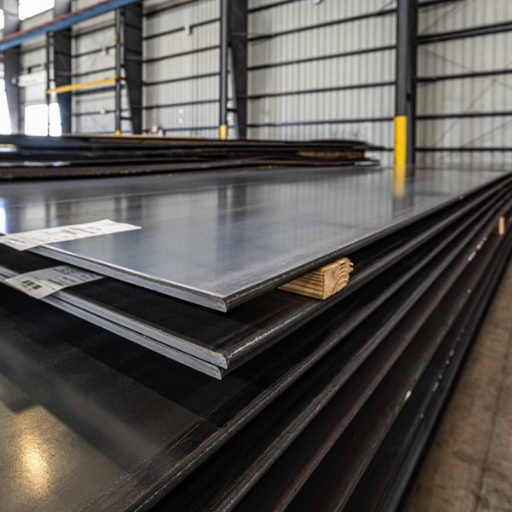
| Key Application | Details |
|---|---|
| Automotive Industry | Chassis, structural parts, crash components |
| Construction | Building frames, reinforcements, roofing |
| Transportation | Railcars, truck frames, trailers |
| Energy Sector | Pipelines, storage tanks, wind turbines |
| Marine Applications | Shipbuilding, offshore structures |
| Industrial Equipment | Heavy machinery, pressure vessels |
| Infrastructure | Bridges, girders, load-bearing structures |
| Safety Components | Impact-resistant zones, protective barriers |
| Lightweight Designs | Reduces weight while maintaining strength |
| Corrosion-Resistant Uses | Outdoor and harsh environmental conditions |
Use in the Automotive Industry
HSLA HX460LAD sheets are extensively used in the automobile industry due to their high strength-to-weight ratio and durability, as well as their corrosion resistance. The following are five applications andthe significance of HSLA HX460LAD sheets in the automotive industry:
- Chassis Parts
One of the major uses of HSLA HX460LAD Sheets is in chassis structures, where they are utilized due to their high tensile strength, which can enhance the rigidity of the structure while reducing its weight. Such weight reduction allows lower fuel consumption in the vehicle without compromising safety.
- Body Design Panels
Lightweight body panels made from these sheets are used, which further reduce the car’s weight while enhancing its crash resistance and serviceability. The material is also corrosion-resistant, which helps these panels last longer in deteriorating conditions.
- Structural Supports
HSLA HX460LAD sheets also serve well towards automotive reinforcements such as door bars and crossbeams. This covers a facet of improved side or frontal impact safety.
- Links, Control Arms, and Brackets.
HSLA HX460LAD sheets are suitable for use in suspension components, such as control arms and brackets. The ability to withstand a significant amount of load and stress for an extended period, combined with high tensile strength and resistance to fatigue, makes these components suitable for suspension purposes.
- Environmental Enabling Factors
With the use of HSLA HX460LAB sheets, a lighter structural mass for the automobile is ensured, which in turn reduces its carbon footprint evenly. This supports the environmental objectives, including resource conservation within the automobile manufacturing sector.
These uses and advantages of HSLA HX460LAD sheets provided are enough indication of how HSLA HX460LAD sheets are designed in the automotive industry.
Construction Applications
Among many, one of the crucial factors taken into consideration when trying to understand the effectiveness of HSLA HX460LAD sheets in construction is their incredible tensile strength and longevity, two construction qualities that are also in high demand within building and civil engineering firms. The following are five different ways in which HSLA HX460LAD sheets are used in construction:
- Structural Supporting Systems
HSLA HX460LAD sheets are applied in the making of the supporting structures within roofs, bridges, and tunnels with bearing capacity, and such structures.
- Roof and wall cladding.
Additionally, this narrow profile (thin yet strong) is very promising for use in constructions, such as roofs and wall cladding, as it reduces the weight since these elements do not require support structures.
- Concrete form work
Formwork for reinforced concrete structures is faced with these sheets, which provide strength to the structure and shape the building.
- Construction platforms and scaffoldings HD
The strong and heavy carrying ability of HSLA HX460LAD sheets guarantees that the platforms and scaffolding of buildings erected do not collapse during practice.
- Industrial storage vessels
HSLA HX460LAD sheets are utilized in the manufacturing process of industrial vessels and silos due to their ability to provide good protection against corrosion and withstand extreme weather conditions.
These applications of HSLA HX460LAD sheets demonstrate the versatility and durability of these structures in meeting the demands of highly aggressive contemporary building conditions.
Advantages in Manufacturing
My take is that HSLA HX460LAD sheets greatly benefit the production industry. Most importantly, they are heavy-duty without being overly heavy, meaning less material is required in the end product, making them economical in terms of both cost and ecology. Furthermore, the material exhibits excellent formability and can be welded, thereby enhancing manufacturing efficiency. In this way, the use of this material is encouraged in industries that wish to boost their productivity, output, and performance without compromising on quality and their green initiatives.
References
- Material Behavior of High-Strength Low-Alloy Steel (HSLA)
Published on MDPI, this article discusses the material behavior of HSLA steel and its characteristics.
Link to source - Hot Rolling of HSLA Steels – a Review of Recent Studies
A detailed review of recent studies on HSLA steels, focusing on their rolling processes and properties.
Link to source - High-strength low-alloy (HSLA) steels
Published on ResearchGate, this paper provides an overview of HSLA steels, their composition, and applications.
Link to source
Frequently Asked Questions (FAQ)
What are the mechanical properties of HSLA HX460LAD sheets?
HSLA HX460LAD sheets exhibit high yield strength and excellent formability, making them suitable for various automotive industry applications. Their mechanical properties enable the weight reduction of structural components such as suspension systems while maintaining durability and performance standards.
What is the chemical composition of HSLA HX460LAD steel?
The chemical composition of HSLA HX460LAD steel typically includes low alloy elements that enhance its strength and corrosion resistance. The precise formulation may vary, but it is designed to meet the requirements of automotive applications and ensure optimal surface quality.
How does coating affect HSLA HX460LAD sheets?
Coating HSLA HX460LAD sheets can significantly improve their corrosion protection and surface quality. Hot-dip galvanization is commonly used to enhance the durability of steel, preventing issues such as white rust and ensuring longevity in various environments.
What surface treatments are recommended for HSLA HX460LAD steel?
Surface treatments for HSLA HX460LAD steel may include passivation and coating to enhance corrosion resistance. Treatments such as light passivation can help minimize marks and light passivation stains, ensuring that the steel maintains its aesthetic and functional qualities.
What types of welds are compatible with HSLA HX460LAD sheets?
HSLA HX460LAD sheets can be welded using various techniques, including MIG and TIG welding. It is essential to follow best practices to ensure the integrity of the welds, especially considering the mechanical properties and steel grades involved in automotive applications.
What are the applications of HSLA steel coils?
HSLA steel coils, including HX460LAD, are widely used in the automotive industry for producing lightweight structural components. They are also suitable for manufacturing parts that require good fatigue strength and excellent formability, such as body panels and reinforcement structures.
What thickness options are available for HSLA HX460LAD sheets?
HSLA HX460LAD sheets are available in various thicknesses to accommodate different application requirements. The thickness options provide flexibility in design and manufacturing processes, ensuring that the sheets can meet the respective yield strength levels required for specific structural applications.
How do the surface quality and structure of HSLA HX460LAD sheets affect performance?
The surface quality and structure of HSLA HX460LAD sheets significantly impact their overall performance. A smooth surface structure with minimal defects, such as slight scratches or run-off marks, ensures better adhesion during coating processes and enhances the fatigue strength of the final product.
What are the advantages of using HSLA steels in automotive applications?
Using HSLA steels in automotive applications offers numerous advantages, including reduced weight without compromising strength. Their mechanical properties enable the design of lighter vehicles, improving fuel efficiency while maintaining high safety standards. The entire range of HSLA steels provides solutions tailored to specific automotive requirements.

